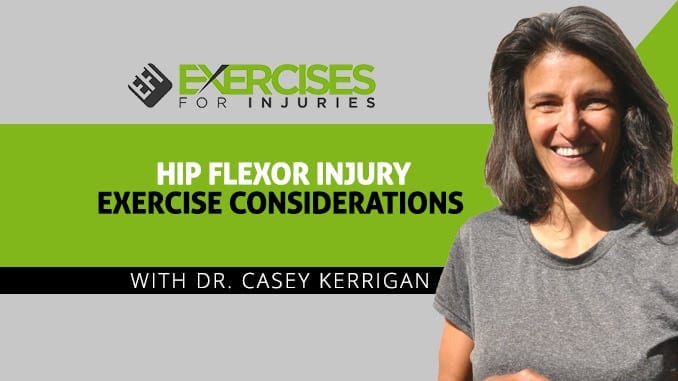The elderly are more likely to take fewer steps than younger adults and are much less likely to slip walking. However, until recently, the reason behind the difference in walking was unclear. Casey Kerrigan, MD, MS Department Chair professor of Physical Medicine and Rehabilitation, University of Virginia Health System, and her team recently researched hundreds of variables to evaluate the walking patterns of children and elderly adults. Of those variables, a decrease in hip extension at the top of the limb trails was the most frequent and noticeable for the elderly, indicating a contraction affecting the hip’s flexor, which develops with age. The best way to treat this is to stretch.
Dr. Casey Kerrigan on Hip Flexor Injuries for Elderly
A simple stretching routine efficiently boosts some of the indicators of gait decline due to age function in frail elderly. The absence of steady improvements in walking kinematics can be due to multiple limitations and disabilities in weak individuals.
A consistent and isolated decrease in hip extension with the elderly that is more prominent in fallers indicates the presence of significant functional hip tightness that could restrict walking performance. Specific stretching techniques are worth studying to reduce hip tightness as a straightforward solution to enhance walking performance and reduce the risk of falls for the elderly.
The powers that enable you to move your knee towards your body and bend at the waist are hip flexors. Hip flexors are flexible muscles that allow people to move and stretch. They are located in the inner and upper thighs and the pelvic region. Strengthening the hip flexors is essential for everyone.
Hip flexors are the critical component of a significant part of daily movement and fitness. The majority of activities directly or indirectly rely on the hip flexors. That is the reason why injuries to this area of your body could affect the ability of your body to move.
This article teaches you about hip flexor exercises that can be done at home or in the gym when you’re eager to return to things. A physical therapist’s help in the process of recovering from injured muscles can aid tremendously.
What Causes A Hip Flexor Injury?
The hip flexors comprise muscles that bend the hip and then move the knee upwards towards the chest.
The muscles are often stressed because of the use they receive from repetitive motions. As time passes, the muscle fibers may be stretched, causing discomfort in the hip and tension.
Hip flexor strains are frequent injuries, especially in active and athletic people.
3 Best Stretches To Help Prevent Hip Flexor Injuries
As we all know, the hip flexors can be easily overused and strained. It is crucial to stretch them before exercising or any strenuous exercise. Stretching your hip flexors whenever they are feeling tight can improve mobility. Maintaining these muscles flexible and loose can aid in avoiding issues that affect other groups of muscles, such as the quadriceps and low back.
The following exercises work on the hip flexors, glutes, quadriceps, and hamstrings. Incorporating these stretches into your routine will improve hip flexibility and reduce strain in the hips and the thighs.
Half-Kneeling Hip Flexor Stretch
- Begin by kneeling in a half-kneeling position.
- Engage your glutes to move your pelvis forward while flattening your lower back while stretching your hip’s front.
- If a more extended stretch is required, lightly push your hips forward while with your back flat and the body straight.
- Complete three sets of 30-second hold every day, twice.
Supine Figure Four Stretch
- Lay on your back while your knees are bent. Place your foot over the knee on the opposite side.
- Hold the leg lying on the ground using your arms, and then pull the leg towards yourself until there is a slight stretch. Keep your lower toes down on the earth.
- Keep your body in a relaxed position and take a break.
- Press your knees to stretch your knee.
- Perform three sets of 30-second holding for each leg two times each day.
Quadriceps Stretch
- Stand up in the front of a chair, and hold it in one hand.
- Hold the top of the ankle using one hand, and then pull your foot towards your buttocks until there is a soft stretch at the front of your thigh.
- Keep the stretch in place a total of ten times before releasing.
- Repeat three times on each leg.
Podcast: Play in new window | Download

